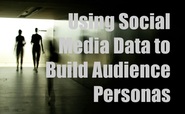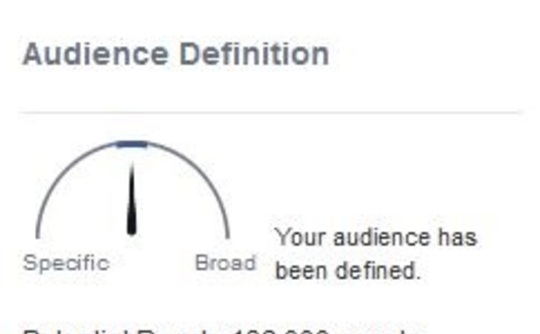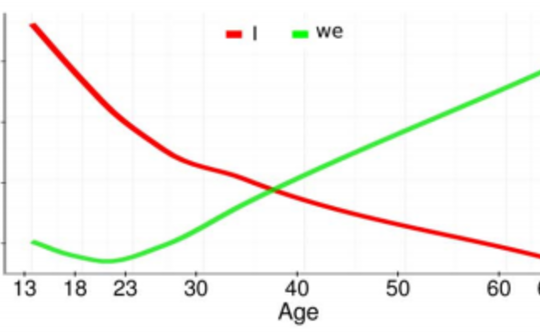Using Social Media Data to Build Audience Personas
See three key resources for using social media data to build audience personas: Facebook fan insights, social monitoring tools and question-and-answer sites.
See three key resources for using social media data to build audience personas: Facebook fan insights, social monitoring tools and question-and-answer sites.
 Social media networks offer a wealth of data about your customers — who they are, what they are interested in, what products or services they use, own, recommend or even dislike. This information is available to anyone that has the gumption to gather it.
Social media networks offer a wealth of data about your customers — who they are, what they are interested in, what products or services they use, own, recommend or even dislike. This information is available to anyone that has the gumption to gather it.
But with the abundance of data out there, it’s sometimes hard to even know where to begin. To help you get started, let’s discuss three key resources for using social media data to build audience personas: Facebook fan insights, social monitoring tools and question-and-answer sites.
Facebook Fan Insights
You can dig into Facebook fans in two ways: through Facebook Page Insights and using Facebook’s Ad Manager.
Facebook Page Insights shows the gender, age group, country, city and language breakdowns of your fans. You can also see these metrics for those people that viewed your content (“People Reached”), those that engaged with your content (“People Engaged”) and those that visited your brick-and-mortar establishment (“Checkins”).
Figures for these different groups can vary greatly, but they provide an interesting way to learn who is truly engaged with your brand, who is simply consuming content and who is not as involved but are at least still interested in you. Since the data is limited to demographic insights, it’s a great first step at defining your audience, but shouldn’t be the only source you use.


Notice how different the data is for Fans (first image) and people that have engaged with the page (second image).
Source: Facebook Insights
To get more detailed information about your fan base, you can use Facebook’s Ad Manager or Power Editor without having to spend a single cent on advertising.
To get started, select your page’s fans as a targeting parameter, then layer on various other demographic and psychographic filters to understand what percentage of your fans fall into that particular group.

Caption: Use Facebook’s Ad Manager to dig into demographics and interests of your fans.
Source: Facebook Ad Manager
For example, let’s say your page currently has 10,000. When you layer on the “All Parents” category, you get an estimated audience of 8,235. That means 82.35 percent of your fans have children.
Adding more targeting layers can help you dig in even further to better understand these fans. This is powerful information when determining what content to produce. You can speak to common experiences and motivations of parents, show how your products/services are uniquely valuable to those with children, or provide tips for balancing family with other aspects of life relevant to your brand.
Keep in mind that this much of this information is being pulled from the users’ profile data, which may or may not be accurate. They may have Liked a band’s page years ago, but are no longer interested in that band or even genre. Or maybe they Liked a page only to enter an iPad contest and don’t actually have any interest in that brand or topic. It’s important to keep scenarios such as these in mind when both creating content for your social media audience and analyzing the significance of the data from such efforts.
Additionally, it’s difficult to confirm the accuracy of the numbers Facebook provides for potential reach. Like everything with Facebook, you must take the information with a grain of salt and be prepared for hiccups throughout the research process.
Social Monitoring Tools
Social monitoring tools offer various data sets and features that can be useful when researching your target audience. Following are three data sets I use to inform content strategies. Keep in mind that “social monitoring” is a bit of a misnomer, however. Tools such as Radian6, Sysomos Heartbeat and Brandwatch pull from more than just social media sites such as news websites and other online publications and also miss a few, such as customer review sites. This is exactly why this information, along with the other resources mentioned, should not be used in isolation, but rather as guiding material for a larger research set.
Word clouds: Some social monitoring tools offer word clouds directly in the software’s interface. I often find these to be light on terms and limited on customization. Instead of using the word cloud provided, I export all mentions from at least the last six months, and copy and paste the entire text into Wordle.net, removing common terms such as brands, campaign names and keywords. I then customize the word cloud further by adding more maximum terms and edit format to make it easier to interpret.
Once you have your word cloud, you can begin to analyze usage of various terms to better understand who your audience is and how they communicate on social media. For example, if they use more first person singular pronouns, they are likely women according to “Personality, Gender and Age in the Language of Social Media” by PLOS ONE. If they use less self-reference (i.e., “we” instead of “I”) they are likely 40 or older.

Caption: Frequency of “I” versus “we” usage across age.
Source: “Personality, Gender and Age in the Language of Social Media,” PLOS ONE
Sentiment: Nearly all social monitoring software provides sentiment analysis capabilities, typically by showing an overview of all positive, negative and neutral sentiment, and showing sentiment for each mention. Sentiment analysis can provide insight into age group and gender as well. For example, males tend to use more affirmation words according to the PLOS ONE study. However, they often use profanity more as well, which can throw off sentiment reporting.
Top Sites: Look for top sites or sources where your brand is mentioned to provide clues about your audience. If your top site is a forum about sports cars, you can draw conclusions that you have a large male customer base. If it is all Tumblr posts and reblogs, you’re safe to presume that your audience is younger, mostly in the 13-25 age group.
Questions & Answer Sites
Want to know what the most common questions are plaguing your brand or industry? Visit Yahoo! Answers, Quora or other question and answer sites. Simply type in your branded and non-branded phrases in order to see the most common questions being asked, and those that have typically not been answered elsewhere. Use this information to learn what is most important to your audience, what their main concerns are regarding your brand or products/services and what mindset they are in when engaging. This is also a great source for content inspiration if you are hitting a wall.
All of these tactics are manual processes that can be very time consuming. However, they provide powerful insights and help legitimize data collected on the people that have indicated some connection to your brand and products/services. And because this is self-reported information, typically in media where they don’t know brands are listening, it can be more honest than survey or focus group responses. These folks don’t feel motivated to answer a certain way-they’re just living their lives, interacting with people and brands that interest them. Luckily for us marketers, it’s all being played out loudly on social media channels. If you are diligent and patient, you can grasp some of what they’re saying to help you learn who they are, and how you can better fit into their lives.
Photo credit: federicogori cc